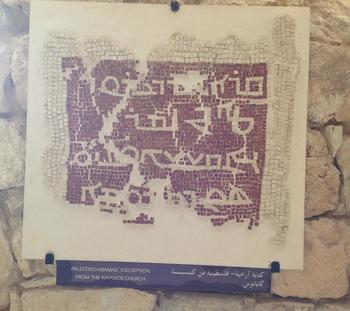Saving the Aramaic Language
Aramaic Online Project
Saving the Aramaic language
Professor Shabo Talay leads a project that has received a 450,000 Euro grant to secure the future of the Aramaic language Turoyo.
In the modern world, the Aramaic languages are threatened by extinction. But with funding from the EU’s Erasmus programme the project Aramaic Online will provide future generations with an option of online training in Turoyo.
The world is full of languages such as Turoyo. Some of which will be gone only a few years from now, whereas other will hang on for maybe another generation or two before becoming extinct. But for languages such as Turoyo there is still hope of survival, which underlines the urgency of the Aramaic Online project.
Today, Turoyo is primarily an oral language. It is one of the successors of the ancient Aramaic tongue, which once was widespread in large areas of the Middle East. Now, only small pockets remain where the successor language is still in use.
A university and monastery collaboration
The project Aramaic Online is a collaboration between The University of Bergen (UiB), the University of Cambridge, Freie Universität Berlin, Universität Leipzig and the St. Ephrem the Syrian Monastery in the Netherlands.
The monastery is an important centre, not only for Syrian-Orthodox Christianity, but also for Aramaic culture and language. It draws on extensive contact with the Aramaic diaspora in Europe. The young Mor Polycarpus Augin Aydin, Metropolitan and Patriarchal Vicar for the Archdiocese of the Netherlands of the Syriac Orthodox Church, is the monastery’s representative in the Aramaic Online project.
The project is hosted by UiB and coordinator is Professor Shabo Talay at UiB’s Department of Foreign Languages. For 2014, it is one of only five projects to received funding as strategic partnerships for higher education under the Erasmus+ programme.
Arranging online courses and creating norms
The project takes broad aim to secure the future of the Turoyo language. In addition to an online course, on several levels, development of learning material is a vital part of the project. Summer schools for adolescents are planned, as well as training for Aramaic teachers. A network of international experts in the language will also be created.
As Turoyo today mainly exists as a spoken language, the project also aims to develop a new orthography. The language has its roots in the classical Syriac (Aramaic) language, which today only is practised in liturgy and ancient writings. As a language, Turoyo stands with one foot planted in the Middle East and the other in Europe, and the project will use both the Latin alphabet and the Syriac alphabet when creating the new orthography.
From the Middle East to Europe
The core areas of the Turoyo language are in the Tur Abdin region in south east Turkey and some regions in northern Syria, and is spoken by the Christian minority. Today, however, most who still speak Turoyo live in countries such as Sweden, Germany and the Netherlands.
Because of emigration, armed conflict (such as the civil war in Syria) and pressure from mainstream society, there are less and less people speaking Turoyo in its traditional core areas. Now the weight of preserving the language rests more heavily on the shoulders of the Aramaic diaspora in Europe.
How can an ethnic minority in a new country retain their language as second and third generations of migrants learn the language of their new country and the old language vanishes? The Aramaic Online project hopes to address this issue.
(Translated from the Norwegian by Sverre Ole Drønen.)

